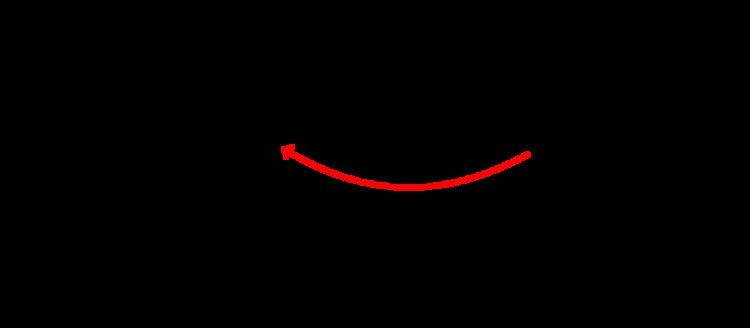 | ||
In transformational grammar, a trace is an empty (phonologically null) category that occupies a position in the syntactic structure. In some theories of syntax, traces are used in the account of constructions such as wh-movement and passive. Traces are important theoretical devices in some approaches to syntax.
Contents
Concept
A trace is usually what occupies the empty (null) position in the syntactic structure that is left behind when some element undergoes movement. For example, in a case involving wh-movement, a structure like
is transformed into
the wh-word what being moved to the front of the sentence. In theories that posit traces, the position from which the wh-word was moved (in this case, the position of the direct object of eating), is considered to be occupied by a trace. In relevant linguistic texts, the trace may be denoted by a letter t; so the second sentence above may be written:
Traces are considered primarily in Chomskian transformational grammar and its various developments. They are distinguished from other empty syntactic categories, commonly denoted PRO and pro. More details and examples can be found in the article on empty categories.
Evidence for traces
Empirical evidence pointing to the existence of traces, independently of all theory-specific considerations, has also been presented in the literature. For example, for many English speakers, the contraction of want to into wanna is possible in some contexts, but not in others:
One way to explain this contrast is to assume that the trace left behind by the extraction of who in the second example blocks the contraction of want and to.
The statement "Vicky wants Peter to win" is transformed into an 'echo'-question. If "who" is moved to the beginning of the sentence, it will leave a trace. The existence of the trace will make it impossible to contract "want" and "to". Consider the following:
However, the validity of this and similar arguments has been called into question by linguists favoring non-transformational approaches.
Principles that regulate traces
In government and binding theory, traces are subject to the empty category principle (ECP), which states that all traces must be "properly governed". Proper government is either theta-government or antecedent-government:
However, intermediate traces are not subject to the ECP because they are deleted at LF (Logical Form).
